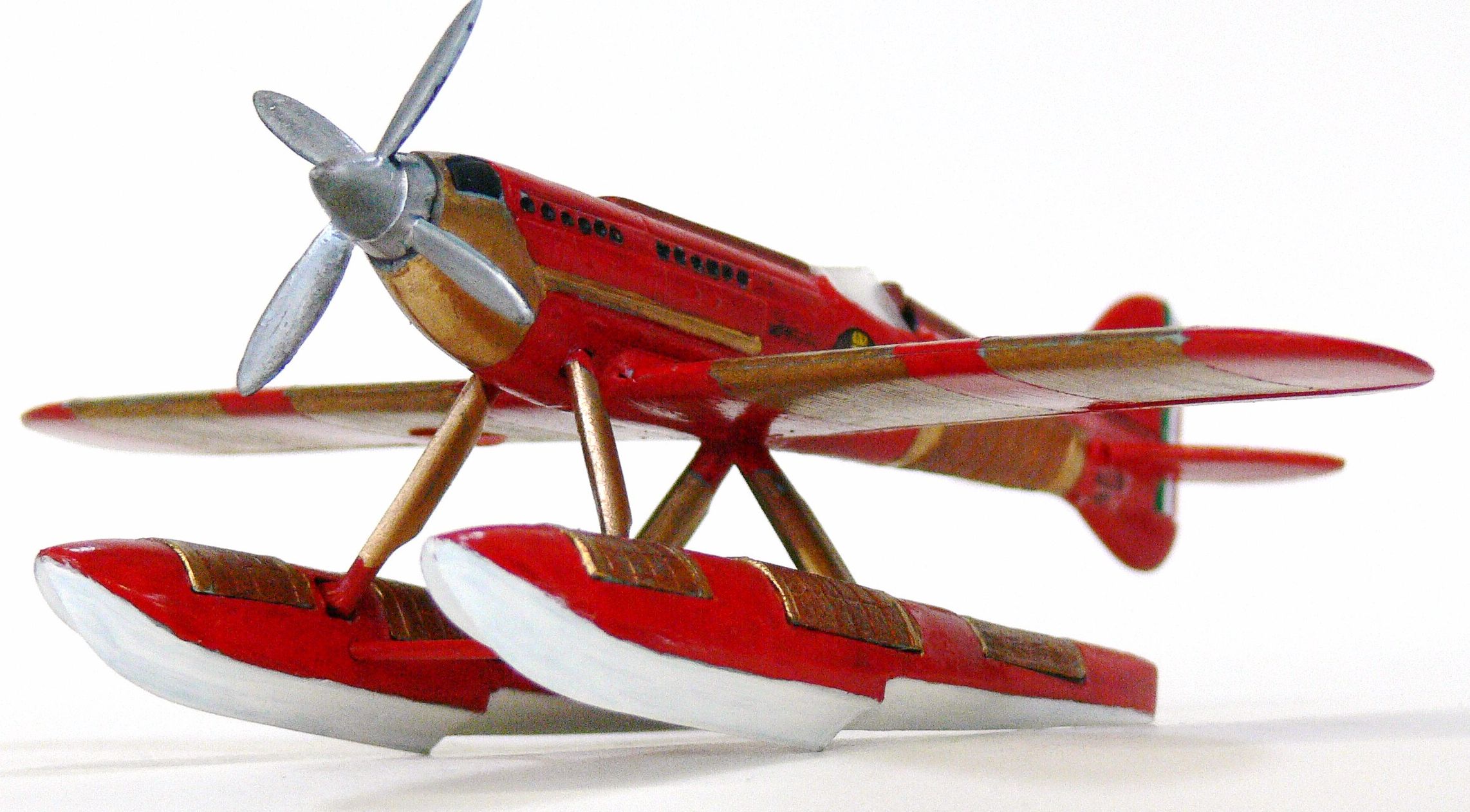Model of the Month October 2017 Macchi MC-72
Macchi MC-72 (showcase 07)
Even before WW1 there was a competition for the high speed flight of hydroplanes, the Schneider Trophy. (For landplanes there was the Gordon-Bennet- Competition).
After WW1 Germany was excluded from these competitions due to the Versailles Treaty. Hydroplanes became more and more important because the planes got heavier and needed longer runways. On water there were long runways free of charge.
In the course of time the planes got heavier because of the bigger and stronger engines and biplanes became less popular in favour of monoplanes with reduced aerodynamic drag. After the British had won the trophy a couple of times the Italian company Macchi developed the raceplane MC 72. (The C behind the M stands for the designing engineer Mario Castoldi). This plane had numerous technical innovations, e.g. two upright V-type in-line engines produced by FIAT, set in tandem arrangement with counter-rotating propellers. The engines were cooled by a large-scale evaporative cooling. However, the plane still carried struts.
But the MC 72 could not participate in the Schneider Trophy due to technical problems. It was won by a British Supermarine S-6b.
Macchi now prepared the plane to break the speed world record. This happened on the 10th of April in 1933: Francesco Agello hit 682.08 km/h. Another pilot flew a 100 km round trip with the same speed
Angello raised the mark to 709.209 on October 23rd, 1933. This record remained untouched until 1938 when it was broken by a landplane, a Heinkel He 100.
Technical Data
Wingspan 9.48 m; length 8.23 m; height 3.29 m; empty weight 2500 kg; take-off weight 2007 kg; engine: two FIAT A.S.6 watercooled upright V-type 12 cyl. engines in tandem arrangement, each 1030 kW/1400 HP; power transmission to two counter-rotating metal propellers; max. speed 702 km/h; open cockpit

